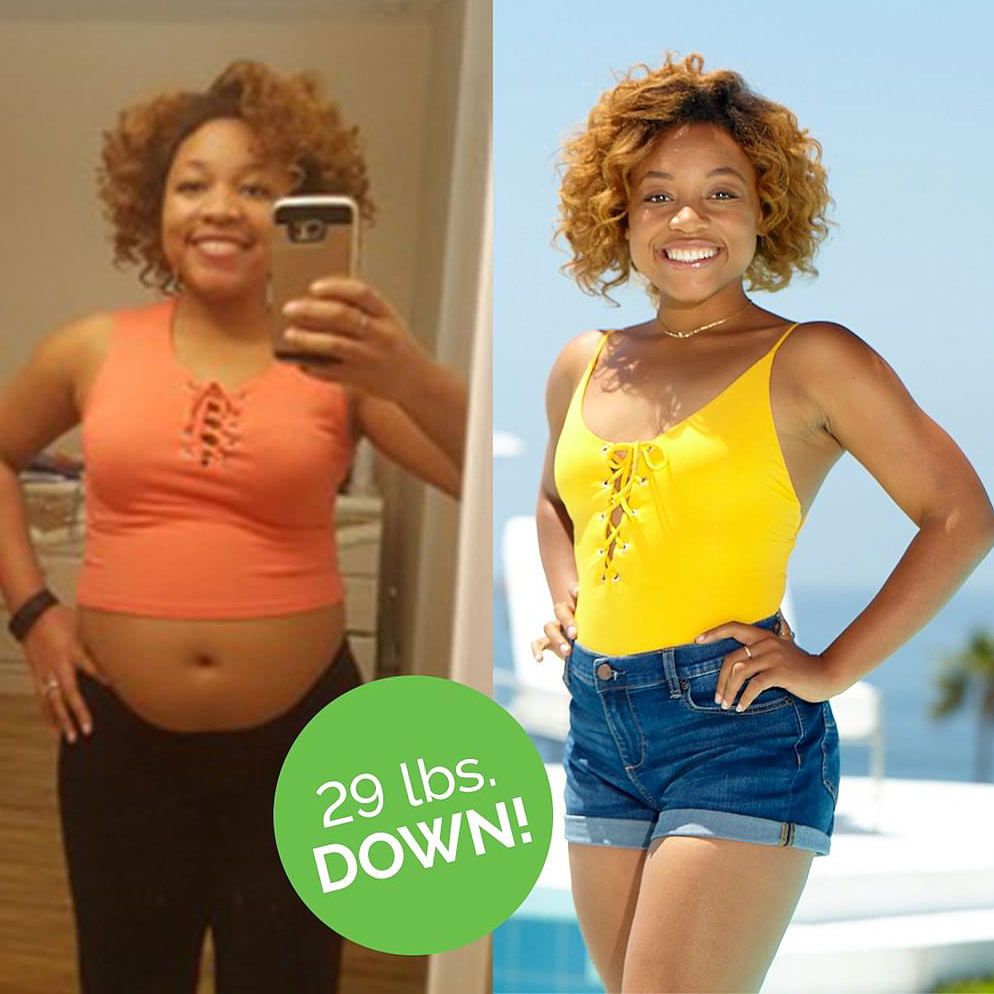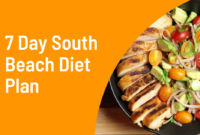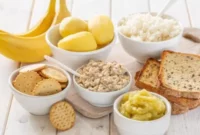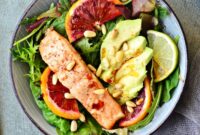South Beach Diet Ketosis: This approach cleverly combines the principles of the popular South Beach Diet with the metabolic state of ketosis, offering a potentially powerful strategy for weight loss. The South Beach Diet, known for its phased approach to carbohydrate restriction, aligns surprisingly well with ketosis, a metabolic process where the body burns fat for fuel. This synergistic combination promises effective weight management, but requires careful planning and understanding of both dietary approaches.
This exploration delves into the specifics of each diet, highlighting their similarities and differences, and providing practical guidance on how to successfully integrate them. We will examine macronutrient ratios, sample meal plans, potential challenges, and strategies for managing any side effects. Ultimately, the goal is to provide a comprehensive understanding of this combined approach, empowering readers to make informed decisions about their health and well-being.
Understanding the South Beach Diet
The South Beach Diet is a popular weight-loss plan that emphasizes a balanced approach to healthy eating, focusing on minimizing unhealthy fats and carbohydrates while prioritizing lean protein and healthy fats. Unlike some restrictive diets, it aims for sustainable weight loss through gradual changes in dietary habits rather than rapid, often unsustainable, weight loss.
Core Principles of the South Beach Diet
The South Beach Diet’s core principle revolves around the selection of carbohydrates. It distinguishes between “good” and “bad” carbohydrates. “Good” carbohydrates, such as whole grains, fruits, and vegetables, are digested slowly, preventing rapid blood sugar spikes and promoting sustained energy levels. “Bad” carbohydrates, like refined sugars and processed foods, are rapidly digested, leading to energy crashes and potential weight gain. The diet also prioritizes lean protein sources, healthy fats like olive oil and avocados, and plenty of non-starchy vegetables. The emphasis is on controlling blood sugar levels for sustained energy and appetite regulation.
Phases of the South Beach Diet
The South Beach Diet is structured into three phases: Phase 1, Phase 2, and Phase 3 (Maintenance). Each phase progressively introduces more carbohydrates, allowing for a gradual transition back to a more varied diet. Phase 1 is the most restrictive, focusing on eliminating unhealthy fats and simple carbohydrates. Phase 2 gradually reintroduces some healthy carbohydrates, while Phase 3 focuses on maintaining a healthy weight through balanced eating habits. The transition between phases depends on individual progress and weight loss goals.
Comparison of Carbohydrate Restrictions
Compared to other low-carb diets like Atkins or ketogenic diets, the South Beach Diet is less restrictive regarding carbohydrate intake. While it limits refined carbohydrates and sugars significantly, it does allow for a moderate intake of healthy carbohydrates like whole grains and fruits, particularly in later phases. Ketogenic diets, on the other hand, drastically restrict carbohydrate intake to induce ketosis, a metabolic state where the body burns fat for energy. The Atkins diet also severely limits carbohydrates initially, but allows for a gradual increase as weight loss progresses. The South Beach Diet’s approach is more moderate and sustainable for many individuals, aiming for gradual weight loss rather than rapid weight loss associated with more extreme low-carb diets.
Allowed and Restricted Foods in Each Phase
The following table summarizes the allowed and restricted foods in each phase of the South Beach Diet. Note that portion sizes are important and should be adjusted based on individual needs and calorie goals.
| Phase | Allowed Foods | Restricted Foods |
|---|---|---|
| Phase 1 | Lean proteins (fish, poultry, beans), non-starchy vegetables, healthy fats (olive oil, avocados), nuts and seeds (in moderation) | Sugary drinks, pastries, white bread, processed foods, most fruits, high-fat meats |
| Phase 2 | All foods from Phase 1, plus some fruits (berries, citrus fruits), whole grains (in moderation), low-fat dairy | Most processed foods, sugary drinks, high-fat meats (except for occasional servings) |
| Phase 3 (Maintenance) | A balanced diet including lean proteins, healthy fats, whole grains, fruits, and vegetables. Occasional treats are allowed in moderation. | Highly processed foods, excessive sugars and unhealthy fats. |
Ketosis and its Role in Weight Loss
Ketosis is a metabolic state where your body primarily burns fat for energy instead of carbohydrates. Understanding this process is crucial for effectively utilizing the South Beach Diet’s ketogenic approach to weight loss. It’s a natural process, but the South Beach Diet helps to induce and maintain it through careful food choices.
The metabolic process of ketosis begins when carbohydrate intake is significantly reduced. This forces the body to find alternative fuel sources. Since glucose (from carbohydrates) is the body’s preferred energy source, a shortage leads to the breakdown of stored fat into fatty acids. These fatty acids are then converted in the liver into ketone bodies – acetoacetate, beta-hydroxybutyrate, and acetone. These ketone bodies become the primary energy source for the body, leading to weight loss as stored fat is utilized. The process is complex, involving various hormonal and enzymatic changes, but the core principle is the shift from glucose to ketone body utilization.
Benefits of Ketosis
Ketosis offers several potential benefits beyond weight loss. Studies suggest that it can lead to improved blood sugar control, potentially benefiting individuals with type 2 diabetes. Some also report increased energy levels and mental clarity, although individual experiences vary. Additionally, ketosis can contribute to reduced appetite, making it easier to adhere to a calorie-restricted diet. However, it’s important to remember that these benefits are not universally experienced and may depend on factors like individual metabolism and the duration of ketosis.
Potential Risks of Ketosis
While ketosis can be beneficial, it also carries potential risks. The “keto flu,” characterized by headaches, fatigue, constipation, and nausea, is a common initial side effect as the body adapts. Long-term adherence to a very low-carbohydrate diet may also lead to nutrient deficiencies if not carefully planned. Furthermore, individuals with certain medical conditions, such as kidney or liver disease, should consult their doctor before starting a ketogenic diet. Careful monitoring of blood ketone levels and overall health is essential.
Foods that Promote and Hinder Ketosis
The success of a ketogenic diet hinges on understanding which foods promote and hinder ketosis. Foods high in fat and protein, with minimal carbohydrates, are key to maintaining ketosis.
Foods that promote ketosis include:
- Healthy fats: Avocado, olive oil, nuts (almonds, macadamia), seeds (chia, flax), fatty fish (salmon, tuna).
- Protein sources: Lean meats (chicken, beef, turkey), eggs, Greek yogurt (full-fat).
- Low-carb vegetables: Leafy greens (spinach, kale), broccoli, cauliflower, asparagus.
Conversely, foods that hinder ketosis are those high in carbohydrates and sugars:
- Sugary drinks: Soda, juice, sweetened beverages.
- Processed foods: Many contain hidden sugars and carbohydrates.
- Grains: Bread, pasta, rice.
- Starchy vegetables: Potatoes, corn.
- Fruits (most): While some berries are allowed in moderation on the South Beach Diet, many fruits are high in sugar.
Sample Ketogenic Meal Plan (South Beach Diet Compatible)
This sample meal plan emphasizes healthy fats, lean protein, and low-carb vegetables, aligning with the South Beach Diet’s principles while promoting ketosis. Remember to adjust portion sizes based on your individual caloric needs and activity levels. Consult a healthcare professional or registered dietitian for personalized guidance.
Day 1:
- Breakfast: Scrambled eggs with spinach and feta cheese, a side of avocado.
- Lunch: Grilled chicken salad with mixed greens, olive oil dressing, and a handful of almonds.
- Dinner: Salmon baked with asparagus and a drizzle of olive oil.
Day 2:
- Breakfast: Chia seed pudding with unsweetened almond milk and berries (in moderation).
- Lunch: Leftover salmon and asparagus.
- Dinner: Ground beef stir-fry with cauliflower rice and broccoli.
Note:
This is a sample plan. Variety is key to ensuring adequate nutrient intake. Explore various healthy keto-friendly recipes to maintain interest and avoid dietary boredom. Always prioritize whole, unprocessed foods.
End of Discussion
Successfully combining the South Beach Diet and ketosis requires careful planning, mindful eating, and an understanding of the potential benefits and challenges. While the potential for effective weight loss is significant, individual results may vary. Remember that consulting a healthcare professional or registered dietitian before making significant dietary changes is crucial, especially for individuals with pre-existing health conditions. By understanding the principles of both diets and adapting them to your individual needs, you can embark on a journey towards a healthier lifestyle.




